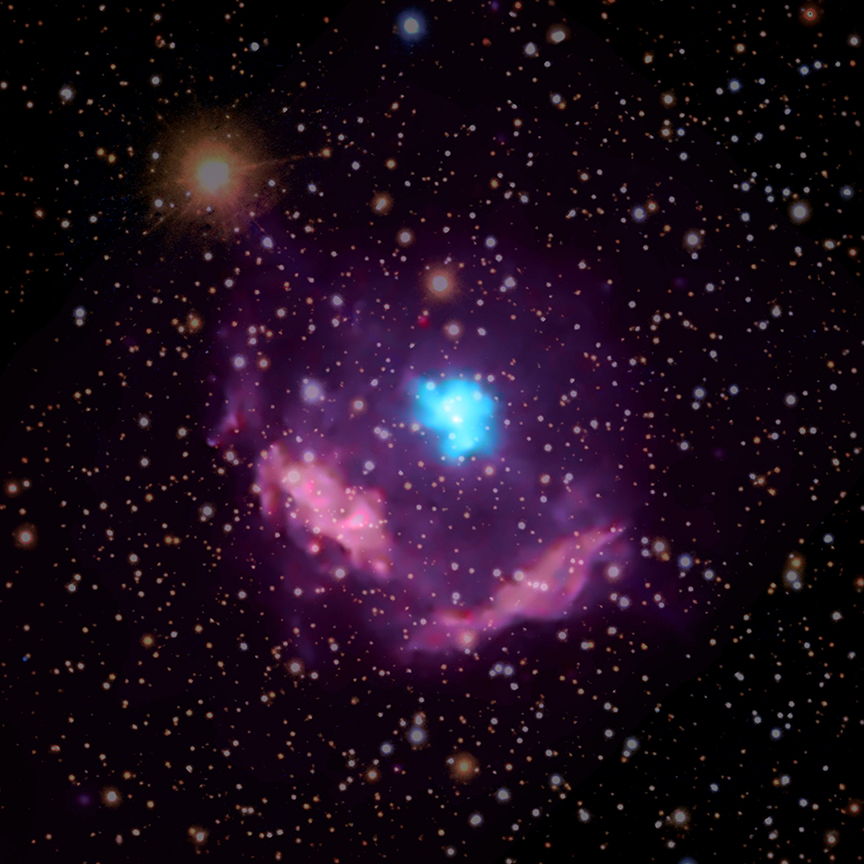This Incredible Blinking Star Is the Youngest Pulsar We've Ever Seen

More than 2 million mph (1 million meters per second) — that's how incredibly fast some stuff in space is moving, according to new research using the Chandra X-Ray Observatory.
Specifically, it's a pulsar-wind nebula — the shell of highly magnetized and high-energy particles surrounding a pulsar — that's clocking such amazing speeds. And the phenomenon has proven that the pulsar hiding inside, Kes 75, is the youngest such object discovered to date, according to a statement from the Chandra team.
A pulsar is a particularly magnetic type of neutron star, the superdense stars formed by certain supernova explosions. Because of their magnetic activity, pulsars shoot twin jets of radiation across the universe, and because they spin as they do so, the result is often compared to the beam of a lighthouse sweeping around periodically.
Scientists have spotted more than 2,000 pulsars to date, and Chandra first observed this particular one in 2000. In the new research, astronomers combined data gathered over the course of 16 years to pinpoint the speed of this object's pulsar-wind nebula. The incredibly fast speeds are likely because the pulsar-wind nebula is traveling within a bubble of gaseous nickel and iron created during the supernova, which has created a pocket of low-density space.
And the speed calculation isn't just a boasting matter; it also told scientists that humans here on Earth should have seen Kes 75's predecessor explode somewhere in the range of five centuries ago. But there's no record of any such observations, likely because there's just too much dust in the way, the team concluded.
Editor's note: This story has been updated to correct a numeric error in the first sentence.
Email Meghan Bartels at mbartels@space.com or follow her @meghanbartels. Follow us @Spacedotcom and Facebook. Original article on Space.com.
Get the Space.com Newsletter
Breaking space news, the latest updates on rocket launches, skywatching events and more!
Join our Space Forums to keep talking space on the latest missions, night sky and more! And if you have a news tip, correction or comment, let us know at: community@space.com.

Meghan is a senior writer at Space.com and has more than five years' experience as a science journalist based in New York City. She joined Space.com in July 2018, with previous writing published in outlets including Newsweek and Audubon. Meghan earned an MA in science journalism from New York University and a BA in classics from Georgetown University, and in her free time she enjoys reading and visiting museums. Follow her on Twitter at @meghanbartels.









